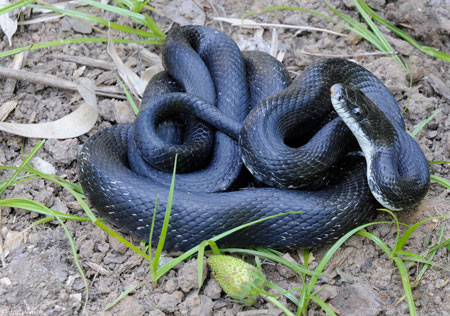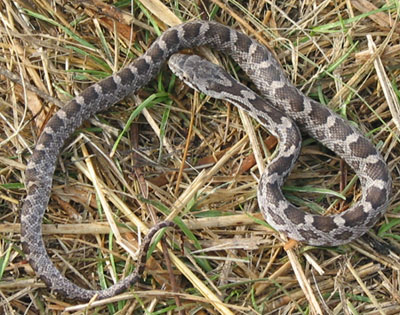Field Guide to Maryland's Snakes (Order Squamata)
Main_Content
Eastern Ratsnake (Pantherophis alleghaniensis) | 
Photo of Adult Eastern Ratsnake courtesy of John White |
Size:
42 - 72 inches. Record - 101 inches. |
Appearance: - Our largest snake.
- A plain shiny black back with weakly keeled scales.
- The belly has an irregular black and white checkerboard pattern, particularly towards the head.
- The chin and throat are cream or white.
- Young have strongly patterned backs of gray and brown blotches on pale grey.
- Young are often mistakenly identified as Northern Pinesnakes (Pituophis melanoleucus melanoleucus).

Photo of Juvenile Eastern Ratsnake courtesy of Scott A. Smith |
Habitats:Occur in a variety of habitats including farmlands, hardwood forests, forested wetlands, isolated urban woodlots and backyards. They do especially well in edge habitats. An arboreal species they are notorious for getting into human residences, where they may live in attics undetected. |
How to Find:Look around farms, abandoned buildings and any edge areas. Drive slowly on country roads just after sunset and look for snakes crossing roadways. Non-venomous, but readily give a painful bite when handled. This is the most commonly reported snake by landowners in Maryland. Take a close look as it is probably what you are seeing in your yard. |
Distribution in Maryland:One of our most common snakes, it is found statewide.

|
|
